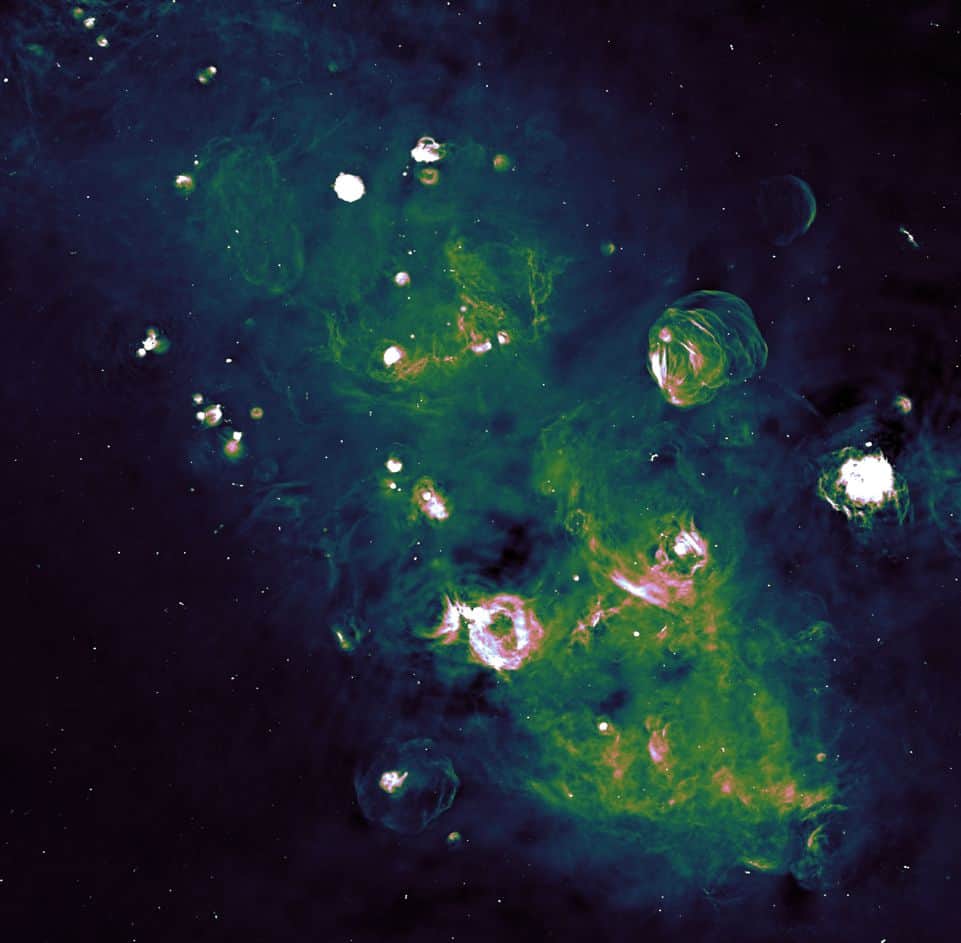A new radio astronomy image depicting the locations of star births and deaths is the most comprehensive radio image of our galaxy to date, heralding an auspicious beginning to the new year.
As part of the PEGASUS and EMU surveys, radio observations of a sizable portion of the Milky Way’s galactic plane were made using the ASKAP radio telescope and the Parkes radio telescope, Murriyang, all owned and run by Australia’s national research organization, CSIRO.
This is the first picture to be shared jointly by the survey teams, and its clarity suggests that the question “where are all the supernova remnants?” may finally be answered.
Astronomers have been stumped by this question for a long time. When a star dies, its remains are known as supernova remnants.

Models suggest that we should witness the remains of a great number of stars that have lived and perished because of the age and density of the Milky Way.
But we haven’t had telescopes sensitive enough to find these pieces yet, and scientists need to find 5 times more pieces than they have found so far for predictions to match up.
The Evolutionary Map of the Universe (EMU) project and the POSSUM project, which both employ ASKAP to understand our universe, are two of the numerous initiatives that are building on the PEGASUS survey.
PEGASUS has finished its pilot observations and will use the Parkes telescope to survey the whole southern sky over the course of the next two years.
The new composite picture, according to Professor Andrew Hopkins, Lead Scientist of the EMU Project at Macquarie University, depicts the galactic plane in the best possible clarity.
“This new picture showcases a region of the Milky Way, only visible to radio telescopes, where we can see extended emission associated with hydrogen gas filling the space between dying stars, related to the birth of new stars, and hot bubbles of gas called supernova remnants. Over twenty new possible supernova remnants have been discovered as a result of combining these images, where only seven were previously known.”
The work that helped find these new possible supernova remnants was done by Brianna Ball, a PhD student at the University of Alberta in Alberta, Canada. The picture was put together by her supervisor, Roland Kothes of the National Research Council of Canada.
“When Roland combined the PEGASUS map with that from the EMU and POSSUM observations, the result was marvellous; when we opened the image for the first time, we were amazed by such quality and beauty,” adds Ettore Carretti, Leader of the PEGASUS project, from INAF.
“PEGASUS has captured a large region of the Galactic plane of our Galaxy full of supernova remnants, regions of ionising hydrogen and planetary nebulae, which, thanks to the combination of data from the ASKAP and Parkes telescopes, can be studied with extremely high precision and accuracy.”
Professor Hopkins thinks that since the new picture is of such high resolution, astronomers will be able to strengthen their knowledge of the Galaxy and beyond with future observations.
“The eventual results will be an unprecedented view of almost the entire Milky Way, about a hundred times larger than this initial image, but achieving the same level of detail and sensitivity. It is estimated that there may be about 1500 more supernova remnants in the galaxy that astronomers haven’t discovered yet. Finding the missing remnants will help us unlock more of an understanding of our galaxy and its history,” adds Professor Hopkins.
Image Credit: R. Kothes (NRC) and the EMU and POSSUM teams